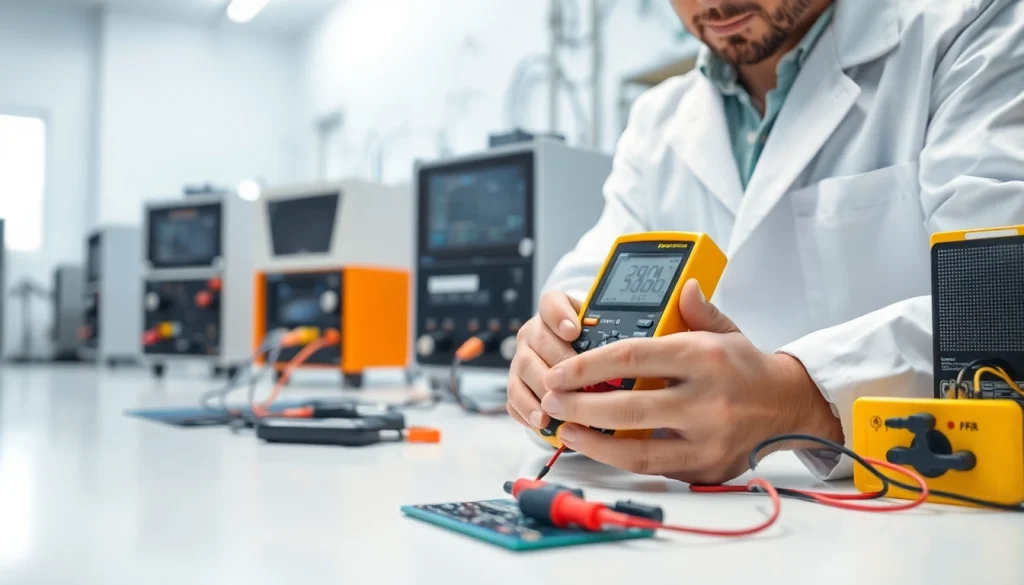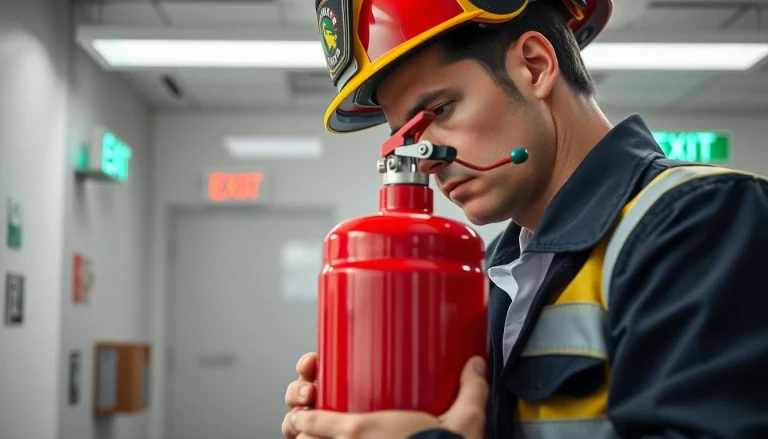
Understanding Electrical Testing
In today’s world, electrical testing plays a crucial role in ensuring the safety and efficiency of various electrical systems and components. From residential systems to industrial settings, regular testing is essential to identify potential hazards and ensure compliance with safety regulations. This comprehensive guide will delve into Electrical Testing, exploring its definition, importance across various industries, compliance standards, types, benefits, challenges, and best practices.
What is Electrical Testing?
Electrical testing is the process of evaluating electrical components and systems to ensure they operate within expected parameters. It involves a series of diagnostic tests to determine a system’s functionality, safety, reliability, and conformity to standards. Tests can include measuring voltage, current, resistance, and assessing insulation integrity. The primary goal is to prevent accidents and malfunctions, thus safeguarding not only the equipment but also the individuals who operate or come into contact with these systems.
Importance of Electrical Testing in Various Industries
Electrical testing is vital across numerous sectors including construction, manufacturing, telecommunications, and healthcare. Each industry relies on electricity for its operations and thus must adhere to specific regulations and standards to ensure safety:
- Industrial Settings: In manufacturing plants, electrical testing helps in maintaining machinery and preventing downtime.
- Healthcare Facilities: Hospitals and clinics require stringent testing protocols to ensure that medical equipment operates safely and effectively, protecting patient health.
- Construction: New buildings must undergo extensive electrical testing to comply with safety codes before occupancy.
- Telecommunications: Telecom companies perform regular electrical testing of their equipment to ensure consistent service delivery and prevent failures.
Key Safety Standards and Compliance
Various organizations provide guidelines and standards for electrical testing to ensure safety and compliance. Key safety standards include:
- National Fire Protection Association (NFPA) Standards: These standards address fire safety and electrical installation practices.
- National Electrical Code (NEC): This code outlines the regulations for safe electrical wiring and installation in residential and commercial properties.
- Institute of Electrical and Electronics Engineers (IEEE) Standards: These provide guidelines regarding the safe operation and testing of electrical equipment.
- Occupational Safety and Health Administration (OSHA) Regulations: OSHA governs workplace safety, ensuring that electrical testing is conducted in adherence to safety protocols to protect workers.
Types of Electrical Testing
Functional Testing of Electrical Components
Functional testing involves assessing whether electrical devices operate as intended under specified load conditions. This includes:
- Continuity Testing: Ensuring that electrical pathways are uninterrupted, confirming the integrity of connections and circuits.
- Voltage Testing: Measuring the voltage level at a component’s input and ensuring it matches expected levels.
- Load Testing: Applying a specified load to assess the performance and reliability of power sources and circuits during operation.
This type of testing can help identify problems like improper grounding, insulation failures, or overloaded circuits that can cause failures or hazards.
Safety Testing Procedures and Techniques
Safety testing is essential to ensure that electrical equipment is safe for use and minimizes risks of electrical shock or fire hazards. Common safety tests include:
- Insulation Resistance Testing: Measuring the resistance of insulation to confirm that it effectively prevents electrical leaks.
- Ground Continuity Testing: Confirming that grounding conductors provide a low-impedance path to ground, essential for safety.
- Dielectric Strength Testing: Applying a high voltage to confirm that insulation can withstand the specified voltage without breakdown.
Thermal and Performance Testing Methods
Thermal testing evaluates the operating temperature of electrical components under load. This is critical to identify overheating which can lead to failures. Key methods include:
- Thermal Imaging: Using infrared cameras to visualize temperature variations in electrical connections, identifying potential hotspots.
- Performance Testing: Assessing how equipment performs under various conditions, including extreme temperatures or environmental factors.
This ensures that electrical equipment operates reliably throughout its intended lifespan.
Benefits of Regular Electrical Testing
Enhancing Safety and Reducing Risks
Regular electrical testing significantly enhances operational safety. By identifying potential issues early, organizations can prevent electrical shocks, fires, and other hazards. This promotes a safer working environment and reduces the likelihood of accidents that can lead to injuries or fatalities.
Compliance with Industry Standards
Adhering to industry standards and regulations is required for legal compliance. Regular electrical testing helps organizations meet these standards, avoiding penalties and ensuring that systems pass necessary inspections. Thus, it enhances credibility and trust with clients and regulatory bodies.
Cost Savings through Preventative Measures
Investing in regular electrical testing leads to significant cost savings over time. By identifying and addressing issues before they cause major failures, organizations can avoid costly downtime, repair expenses, and safety-related accidents. Furthermore, it helps extend the lifespan of equipment, maximizing return on investment.
Common Challenges in Electrical Testing
Identifying Faulty Components
One of the biggest challenges in electrical testing is accurately identifying faulty components. Traditional testing methods may not detect intermittent faults or components that fail under specific conditions. Utilizing advanced diagnostic tools and technologies can enhance fault identification accuracy.
Ensuring Accuracy in Measurements
Accuracy is paramount in electrical testing. Errors in measurement can lead to misguided assumptions about equipment performance. Regular calibration of testing equipment and adherence to standardized testing protocols are crucial for ensuring measurement precision.
Adapting to Technological Changes
The rapid pace of technological advancements poses challenges in electrical testing. New equipment and technologies require updated testing methods and knowledge. Continuous training and education for technicians are vital to keep pace with these changes and ensure effective and relevant testing practices.
Best Practices for Effective Electrical Testing
Choosing the Right Equipment for Testing
Selecting appropriate equipment is essential for accurate electrical testing. Technicians should invest in high-quality multimeters, insulation testers, and circuit analyzers that meet industry standards. Regular calibration of these tools ensures their reliability and accuracy in providing data.
Training and Certification for Technicians
Electrical testing requires specialized knowledge and skills. Technicians should pursue training programs and obtain certifications to enhance their expertise. This not only ensures compliance with industry standards but also enhances personal competence and safety awareness.
Documentation and Continuous Improvement
Maintaining proper documentation of testing procedures, results, and corrective actions is crucial in electrical testing. This fosters accountability and provides a basis for continuous improvement. Regular audits and evaluations of testing protocols should be conducted to identify areas for enhancement.






